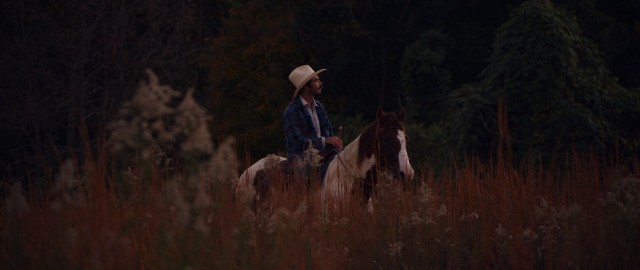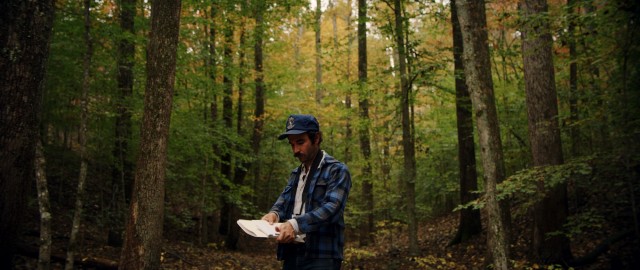It’s very strange how many pieces of entertainment this year seem to so perfectly align themselves with “pandemic life”: stories of isolation, loneliness, and repetition (kudos to Vox on this excellent summation). Perhaps it’s simply our desire to contextualize our reality via the media we consume, but it’s hard to deny the uncanny way that so many films and TV episodes have captured the nature of quarantine with almost prophetic accuracy.
On some level, To Draw A Horse from co-directors Stephen Stinson and Brenton Fosner feels like one of those uncanny cinematic prophecies. It deals with a lot of very “2020 things”: the nature of home, the experience of isolation, etc. But, unlike so many movies or TV shows that have become unexpected soothsayers for this year’s unyielding sense of anxious dread, To Draw A Horse is in a tranquil tonic to all that ails us right now. In some ways, it’s the anti-pandemic short we didn’t know we needed: a loving, calm look at home designer Bob Butler as he ruminates on his life, the nature of creativity, and how one achieves happiness.

“Bob isn’t precious about his achievements, he isn’t squeezing tight to success if it’s not feeding his soul” – co-director Brent Fosner
If you’re one of the few people who follow my write-ups on this site with any regularity, you’re already well aware that I’m a discerning critic of “profile docs.” They are ubiquitous online, churned out by directors and cinematographers with nice cameras and lenses seeking an easy avenue to Staff Picked stardom. I don’t necessarily begrudge these “profile docs,” but I do find the majority of them forgettable as so few truly engage me on a cerebral or emotional level.
Admittedly, I was ready to discount To Draw A Horse as being more “profile fodder”: it starts slow and somewhat conventional (e.g. artist discussing his craft via talking head interview and interspersed b-roll) . But, gradually, I found myself lost inside of it. What I initially mistook as slowness was, I began to realize, a very intentional, atmospheric sense of rhythm. It’s not slow but measured: a perfectionist documentary profile of a self-proclaimed perfectionist.
There’s interesting craft exploration to be sure—the nature of design, the thrill of watching a top-notch designer discuss his particular medium and how he goes about creating something aesthetically pleasing. But, the stuff I found most engaging are the “life lessons” Butler touches upon: finding happiness, existential musings on where we draw meaning and how we maintain satisfaction.
As co-director Brent Fosner relates:
“It’s so easy to get caught up in the rat race, to burn ourselves out in pursuit of wealth and success. The striking thing about Bob, is he has found success several times throughout his life, but when those efforts start to rule him instead of bringing him joy, he moves on. Bob isn’t precious about his achievements, he isn’t squeezing tight to success if it’s not feeding his soul—he’s able to let go. I find that very inspiring.”
Likewise, I too found beauty in Butler’s ability to find contentment in simple pleasures. I realize that’s a potentially cliché platitude, but Butler’s embodiment of it and the film’s resulting visual presentation feels profound.
What if we all just stopped grinding and started living? It’s a lesson that seems so simple, yet, as I battle my own anxiety and inherent propensity to busyness, it’s something I really needed to see and hear right now. Breathe in. Breath out. This is water.

“We wanted Bob’s personality to be reflected in the way we shot. Intentional, slow-paced, methodical.” – the directorial duo explain their approach to production.
The visuals are astonishingly gorgeous: every frame perfectly composed and constructed (fitting for a film about a person predisposed to create beautifully designed things). But, beyond just the objectively pretty cinematography, there’s an artfulness to which the entire film is structured and edited, backed by a musical score that is equally meticulous and well-implemented.
In communicating with Short of the Week, co-director Stephen Stinson described the process of interviewing Bob Butler as feeling “like therapy.”
I think that’s a very succinct summation of what To Draw A Horse is and why it’s so great—it’s cinematic therapy. And, in a time when everything feels bleak, I’d argue, it should be required viewing.

 Ivan Kander
Ivan Kander